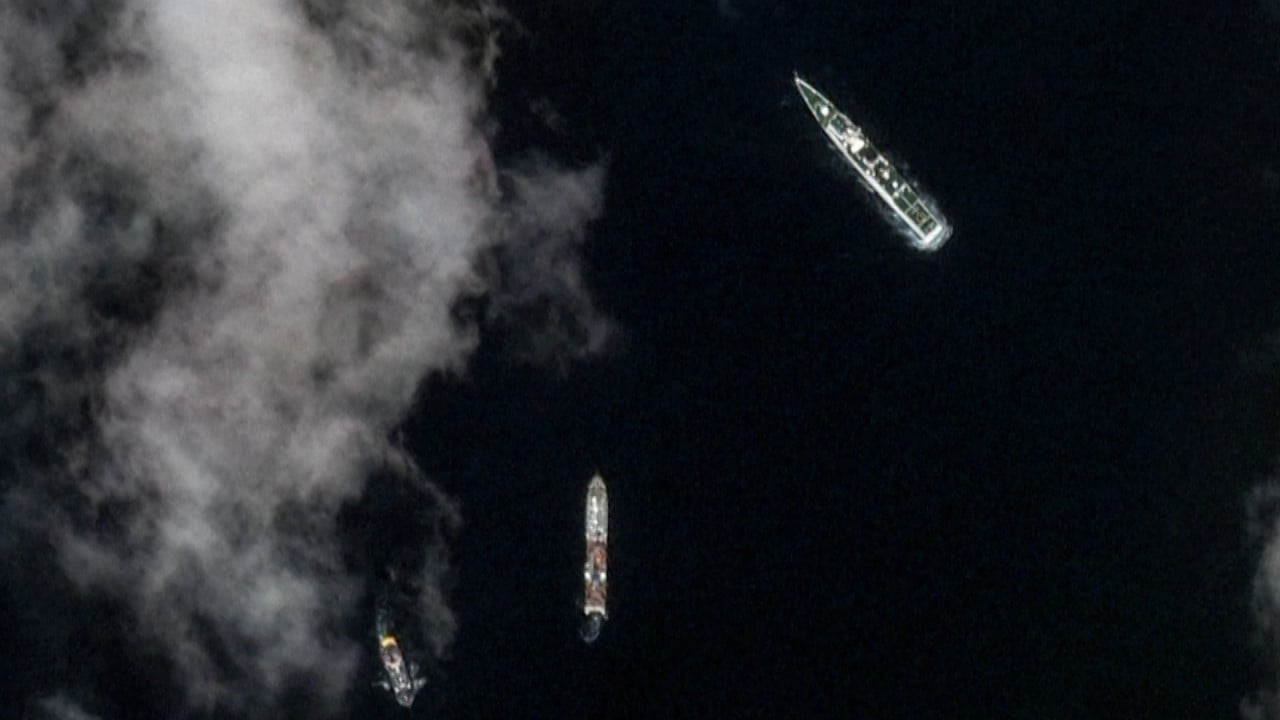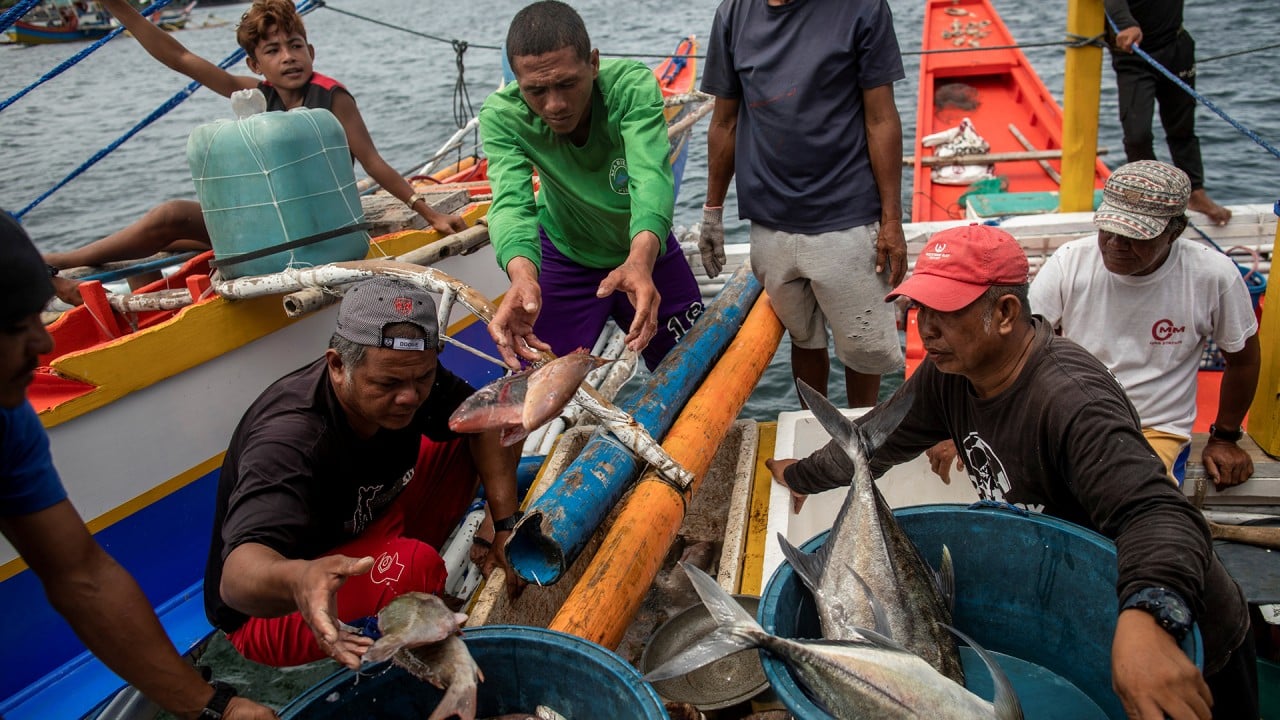South China Sea: what is Beijing’s ‘maritime militia’ and how does it support the PLA?
The Philippines and some think tank analysts believe these vessels are part of the Chinese maritime militia, a backup force that works in close coordination with the Chinese coastguard as Beijing asserts its vast territorial claims in the South China Sea.

But the militia’s existence has been largely left out of official Chinese statements about marine clashes with the Philippines. China’s foreign ministry has repeatedly denied the involvement of the “maritime militia” in South China Sea stand-offs.
“The PLA Navy, China Coast Guard and Chinese Maritime Militia vessels engaged in dangerous manoeuvres, including ramming and towing,” the Philippines’ National Task Force for the West Philippine Sea said.
But Beijing rejected Manila’s accusations, insisting that the vessels were Chinese fishing boats that had a right to be there.
“It is justified and lawful for Chinese fishing boats to operate or shelter from wind in the area, and the Philippines is in no position to make irresponsible remarks,” foreign ministry spokesman Wang Wenbin said.
According to a report in February by the Asia Maritime Transparency Initiative under the US-based Centre for Strategic and International Studies (CSIS), an average of 195 Chinese militia vessels were observed at nine key “features” in the Spratly Islands on any given day last year, a 35 per cent increase over 2022.
The report described China’s maritime militia as “a force of vessels ostensibly engaged in commercial fishing, but which in fact operate alongside Chinese law enforcement and military to achieve political objectives in disputed waters”.
What is the maritime militia?
China’s 2013 defence white paper categorised the country’s militia as one of the three components of China’s armed forces, elevating its importance both on land and at sea.
Beijing defines its national militia as an armed mass organisation composed of civilians retaining their regular jobs and serving as an auxiliary and reserve force of the People’s Liberation Army (PLA).
China’s maritime militia comprises a civilian wing of licensed commercial fishermen who are not full-time military personnel. They could also include former servicemen, demobilised soldiers and fishermen who receive financial support and military training from the government.

In a 2021 study, Cui Haoran, a maritime law specialist from Shanghai University’s law school, wrote that under China’s domestic law and maritime rights enforcement practices, maritime militias were regarded as a flexible, emergency policy tool. Although maritime militias were essentially paramilitary organisations with a certain degree of operational autonomy, they were mostly limited to serving as auxiliary forces for the navy and coastguard, he added.
According to a 2021 report by the CSIS, China’s militia boats mostly fall into two categories: professional maritime militia fishing vessels and Spratly backbone fishing vessels, some of which are over 55 metres (180 feet) in length.
Beijing’s deployment of a maritime militia for sovereignty patrols and as reservist forces has been widely criticised by Western countries for exploiting “grey zones”, because while the vessels may not trigger direct military conflict, they can still affect neighbouring countries that have rival territorial claims.
Zhu Feng, an international relations professor at Nanjing University who specialises in South China Sea affairs, dismissed the concerns as an “overreaction” to China’s maritime militia, saying they had been “hyped up by the United States and Western society”.
“The presence of maritime militia aims to strengthen Chinese fishermen’s ability to defend themselves in the face of harassment or forced evictions at sea by other countries,” he said.
Decades in the making
In 1973, several Chinese civilian fishing boats began operating around the Vietnamese-held islands, raising flags and physically occupying at least one feature, prompting South Vietnam to send warships to investigate.
An eventual naval battle in 1974, in which the maritime militia took part, saw China gaining control of the Paracels – known in China as the Xisha Islands and in Vietnam as the Hoang Sa Islands.
The status of the maritime militia was further elevated during a 2013 visit by Chinese President Xi Jinping to Hainan province, where he inspected and commended a maritime militia unit based in the fishing port of Tanmen.
In 2014, the militia also confronted Vietnamese vessels during a two-month stand-off near a Chinese-controlled oil platform near the Paracels.
What does it do?
In 2015, the PLA journal National Defence published an article that predicted an increasingly complex security situation at sea, and argued that building a strong maritime militia could form the backbone of China’s maritime defence.
The maritime militia essentially performs six functions: maintaining Beijing’s presence in remote waters; surveillance and reconnaissance at sea; cooperation with authorities in law enforcement; search and rescue; supporting land reclamation work; and aiding naval operations during wartime.
The “floating pieces of sovereignty”, according to Collin Koh, a maritime security researcher at Singapore’s Nanyang Technological University, have helped strengthen China’s sovereignty claims in the strategic waters and made them “first responders to any contingency at sea”.
The National Defence article said that one of the maritime militia’s goals was to maintain a regular presence through fishing operations.
In the event of a large-scale armed clash, the militia could provide key information about the adversaries and can “contribute to perimeter patrols, warnings … engagement, and evicting the enemy”, the article said.
Why use militia in disputed waters?
China’s maritime militia is unmatched in numbers and reach. Because the vessels appear as low-profile fishing boats, they can complicate law enforcement efforts by any country that aims to curb the militia’s actions, according to Koh.
The maritime militia has also been a valuable source of reconnaissance, broadening the channels of China’s naval intelligence with stealth-like abilities, covert ferrying tactics and operations in sensitive or radar blind zones not suitable for Chinese military ships.
“The maritime militia has unique advantages in dealing with sovereignty disputes – [it] not only avoids negative political and diplomatic consequences brought by military involvement, but also strengthens control over its maritime territory,” a 2013 article published in National Defence said.
The militia also has an elaborate communications and command network that is essential for alerting available fishing vessels that can quickly outflank a foreign coastguard patrol, making it difficult to expel Chinese boats, according to Koh.
However, Cui, from Shanghai University, said in the same study in 2021 that merely pursuing hard power in disputed waters through enhanced administrative strength and equipment does not necessarily translate into law enforcement strength, adding that frequent use of navy and coastguard forces could exacerbate tensions.
If a nation’s navy or coastguard uses coercive measures to expel civilian vessels from other countries, it often leads to confrontations between military and civilians or the coastguard and civilians, actions that can provoke international sympathy for the “weaker actor”, according to Cui.
Maritime militias should only use force to defend their rights as a last resort – in self-defence, or to prevent further military confrontation, he said in the study.
More militia, more often?
Maritime experts said they expected the role of China’s maritime militia to grow in parallel with China’s navy and coastguard so it could better support their operations. They also expect Beijing to double down on incorporating the maritime militia into its national strategy.
Koh said he did not expect a significant increase in the number of vessels deployed at sea, in part because of a manpower shortage. Young people were “comparatively less … motivated” to join such outfits, although he expected that Beijing would continue recruiting efforts, he said.
Nevertheless, other countries that have territorial disputes with China would struggle to match the Chinese militia fleet.
“Even if such forces are built in claimant states, matching their Chinese counterparts in terms of scale and organisation also requires a huge amount of investment,” Koh said.

